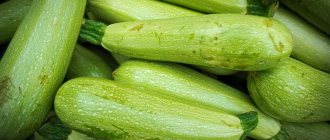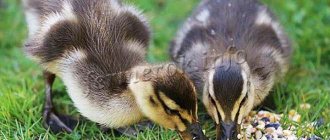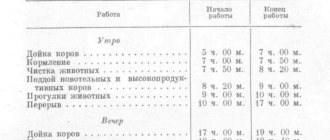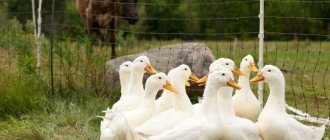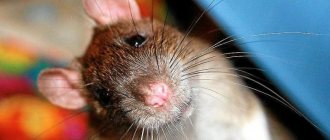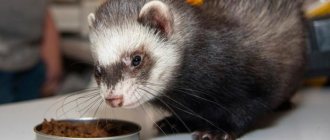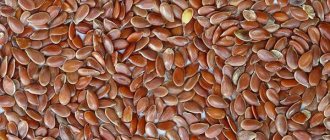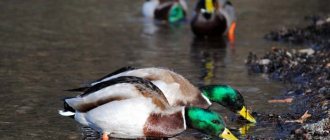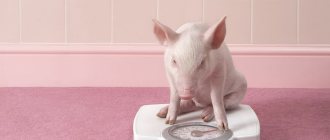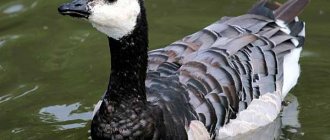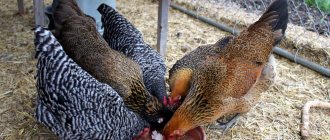Horses are extremely hardy animals, which by their nature are adapted to being on pasture for a long time and feeding on pasture. However, this does not mean that when keeping horses at home, attention should not be paid to their diet. Regardless of the purpose of the animal, be it a working horse, a sports horse or a breeding stallion, the diet should be developed in strict accordance with the physiological characteristics of the animal.
In this article we will look at the main types of feed that are used in horse nutrition, give examples of horse feeding rations, and the basic rules that should be followed when giving food to animals.
- Sports
Horse Feeding Basics
Domestic horses
A horse is a herbivore. But this does not mean at all that she should only eat grass. There is a huge variety of foods that are healthy for horses. Some products are treats, others are included in the daily diet. All horse feed is divided into three large groups: juicy, roughage and concentrated feed. But their ratio in an animal’s diet can vary greatly depending on the needs of a particular individual, its health, physical activity and other factors.
Interesting!
If we talk about average standards, then every day a horse should consume at least 60% of succulent and roughage feed and up to 40% of concentrated feed. A larger amount of concentrates leads to problems in metabolic processes and decreased immunity.
The horse's digestive system needs a certain regime. These animals in nature eat often, but little by little. So you need to know not only what to feed your horse, but also how to do it. The same goes for domestic animals. They cannot eat a lot at once and this must be taken into account when developing a daily diet.
Horse meat breeding - a little history
At the beginning of the twentieth century, the population of the Russian Empire was 160 million people, and the horse population was more than 21 million (about 25 percent of all horses in the world).
Such a number of these animals led to the fact that horse meat sausage was a completely common product on Russian tables, along with beef or pork. In those days, chicken meat was generally classified as a dietary product. However, over time, the active development of large industrial poultry farms and pig farms has radically changed the diet of modern Russians.
Horses, by their nature, are quite large animals. The weight of an adult individual can reach 700-800 kilograms, and the average live weight ranges from 400 to 500 kilograms, which on average makes it possible to obtain up to 250 kilograms of finished meat products from one animal. Further calculations, which we will use to draw up an approximate business plan, will be based precisely on this indicator of horse meat yield.
Juicy food
Also check out these articles
- How to feed peonies in spring?
- How to care for a horse
- What edible mushrooms can be collected in the Moscow region
- Kuchinsky Jubilee breed of chickens
Horse free grazing
Without succulent food, it will be difficult for a horse to survive, since this is what is most useful and natural for it. Green grass is the basis of nutrition for proud, handsome people. Usually horses are allowed to graze freely, where they eat plenty. This is beneficial for both the breeder and the animal. If there is no walking, then you will have to stock up on grass and feed it in the stall. But before you feed your horse grass, you need to make sure that it is healthy and not poisonous or spoiled. If the process of rotting has begun, such food should be thrown away!
Important!
There should be no poisonous herbs in the field where the horse grazes! Before allowing an animal there, you need to study the area. If you often come across poisonous grasses, it is better to change the pasture.
An alternative (but not a complete substitute for fresh grass) is haylage. Haylage is dried grass, hermetically preserved in bags. As a rule, it is purchased for the winter so that the animal can enjoy its favorite food all year round. Juicy food also includes root vegetables and vegetables. Horses are very fond of pumpkin, carrots, and fodder beets. Sometimes they add boiled potatoes, but not often.
Stable organization
The first thing you should pay attention to is its size. It should be spacious, well lit and have a sufficient level of ventilation, since these animals do not tolerate dampness, constantly low temperatures and musty air very well.
Therefore, the main requirements for the stable are a constant indoor temperature within the range of plus 15 - 18 degrees and natural light entering the stable through a sufficient number of windows. The region of our country in which the farm is located directly affects the costs of meeting the listed requirements.
The stalls must have space for grain feeders and drinkers, hay mangers with a compartment for mineral supplements. The drinking bowl can be either a modern automatic one or a regular, well-fixed bucket. According to regulations, nurseries and feeders must be installed at the level of the horse’s chest, for convenient and comfortable feeding of animals.
Horse roughage
Meadow hay
Rough feed combined with succulent feed is the basis of what to feed horses. What is considered roughage?
- Hay is dried grass with no more than 17% moisture. It is given throughout the year, regardless of whether the animal eats green grass or not. To make it convenient, it is laid out in large hay barns, to which horses must have access 24 hours a day.
- Straw cannot completely replace hay, since its nutritional value is much lower. But it is fed along with hay in small quantities!
- Herb meal or pellets are pressed or ground dried grass. Due to the manufacturing method (high temperatures, pressing) it can also be classified as concentrated feed.
Kosyachnaya mating
Horse mating does not require human intervention. The herd is divided into several schools of no more than 20 mares. Each group is assigned one stallion, which is constantly with the herd.
An experienced shoal breeder himself identifies the mare in heat and covers her. An unmistakable choice of the best time for mating ensures a high percentage of mares getting pregnant. Mating occurs in conditions as close as possible to natural ones. The leader protects his small herd. Among the mares, their own hierarchy is established. There is an alpha female, she leads the movement of the group and determines the place for grazing.
With this method it is impossible to control the pregnancy of females. Only after foaling does it become clear how successful the breeding season was. On the other hand, foals born in a herd are healthier and better adapted to herd maintenance. The process of “socialization” of young animals occurs naturally with minimal losses. Sires raised outside the herd cannot become good stallions.
Concentrated feed
We recommend reading our other articles
- Cherry variety Ovstuzhenka
- How to water cucumbers
- The best meat chicken breeds
- Garlic Lyubasha
Feeding horses with concentrated feed
Knowing what to feed your horse, you can provide it with the right set of nutrients and this will give a positive result. Some breeders ignore concentrated feed, while others, on the contrary, abuse it. But they cannot be completely excluded, just as they cannot be replaced with grass and hay - this is an important part of the diet, although not as significant as rough and succulent food.
Concentrated feed can be of three types: grain mixtures, grains and compound feed. Cereals and grain mixtures are a combination of several types of grain with or without vitamins. They usually include oats, barley, corn, and bran. They contain an abundance of vitamins, starch, fiber, calcium, and protein. This food increases the animal’s energy, giving it the strength to do light and heavy work and exercise.
Concentrated feed also includes compound feed. This is a specialized feed, used mainly on large farms due to its high cost. It contains vitamins, minerals, cake, bran, crushed grain, grass flour and other useful components in certain quantities.
How to feed horses correctly?
Horse with hay in its mouth
You cannot feed horses everything, as this can cause a lot of problems. A veterinarian or horse specialist can tell you what to feed horses, but the diet is always selected individually based on the physical characteristics, load of the animal and other indicators. It’s difficult to say exact standards, but if we talk about an approximate, adjusted diet, then we have our own standards.
The diets described above are only approximate and are adjusted depending on the animal’s load, its health, and needs. Even a nursing mare can have a different diet depending on how difficult the birth was and the condition of her baby. Food is fed to horses 2-4 times a day. If there is a walk, then only in the morning and evening, and if there is no walk, then 1-2 times during the day too.
| Horse type | Diet |
| Workhorse |
|
| Sports horse |
|
| Lactating mare |
|
Differences in winter feeding
Horses in a stall
What to feed a horse in winter? This question is very often asked by young breeders. If during the warm season the horse grazed in the meadows all the time and ate no more than 1-2 times a day in the stall, then the question is quite understandable. You don’t want your animal to lose weight in the winter from a lack of nutrients!
Important!
Instead of green, lush grass, haylage is often used in winter. They give it in small quantities because it is expensive.
The main difference between winter nutrition and summer nutrition is the lack of green grass and regular walking. But since physical activity is reduced, the horse needs less feed. The diet in winter is based on hay. Oat and barley straw are also fed. To meet the need for succulent food, more fresh vegetables and root crops are given. And, of course, grain (oats, barley) is given in certain quantities.
For a horse weighing 500 kg you need per day:
- 12 kg of hay;
- 6 kg straw;
- 2-4 kg of grain (depending on physical activity);
- 8 kg of root vegetables.
Premixes to support the animal’s immune system during the frosty season wouldn’t hurt either.
Features of the digestive system
The structure of the digestive system of horses is very similar to the structure of the human body.
Digestive system of horses
They bite off food with their front incisors and chew it with their molars.
Horse incisors
During the chewing process, saliva is released, which helps soften the food, which enters the stomach through the esophagus. A mature animal, weighing up to 500 kg, has a stomach with a capacity of up to 15 liters. The main difference between this organ and the human one is that it cannot stretch: food passes through it according to the same principle as in the esophagus. Accordingly, the digestion process in horses is not efficient enough.
Horse stomach
The small intestine, with an average length of 22 m, is zoned into 3 parts: duodenum, small intestine and ileum. Bile coming from the liver helps break down food in it.
Intestines and digestive organs
The cecum, up to 120 cm in size, helps the small intestine in breaking down food. Through the large intestine it passes into the rectum, which is about 30 cm in length. Animals do not have a gallbladder. There is a theory that, due to the fact that the horse is a herbivore, it does not need a strategic reserve of bile to process heavy food.
The composition of the feed and its quantity directly depend on the nature and volume of the horse’s activity.
Water in a horse's life
Horses at a watering hole
It was discussed above what to feed a horse. But water also plays a big role. The horse needs plenty of water. She can drink up to 60 liters per day. Therefore, it is advisable to always have access to fresh and clean water.
But there are some nuances here too. So, for example, after a long day of work or a walk in the cold air, you cannot bring the horse into the stall and immediately give it water. This could affect her heart or cause stomach cramps. The horse should take a short break from hard work, rest, and then get water.
In winter, water is given neither cold nor hot, but at room temperature. You can’t heat it, just like you can’t give boiled water. But you can leave it in the house so that it warms up a little naturally.
Watering
Unlike feeding, drinking regime is not a problem. An adult horse requires up to 60 liters of water per day. It should be fresh, without sediment or foreign odors.
The water should not be icy, as this will cause a cold in the horse.
In winter, water must also be in sufficient quantity, since the horse will not be able to eat enough snow to cover the water balance.
